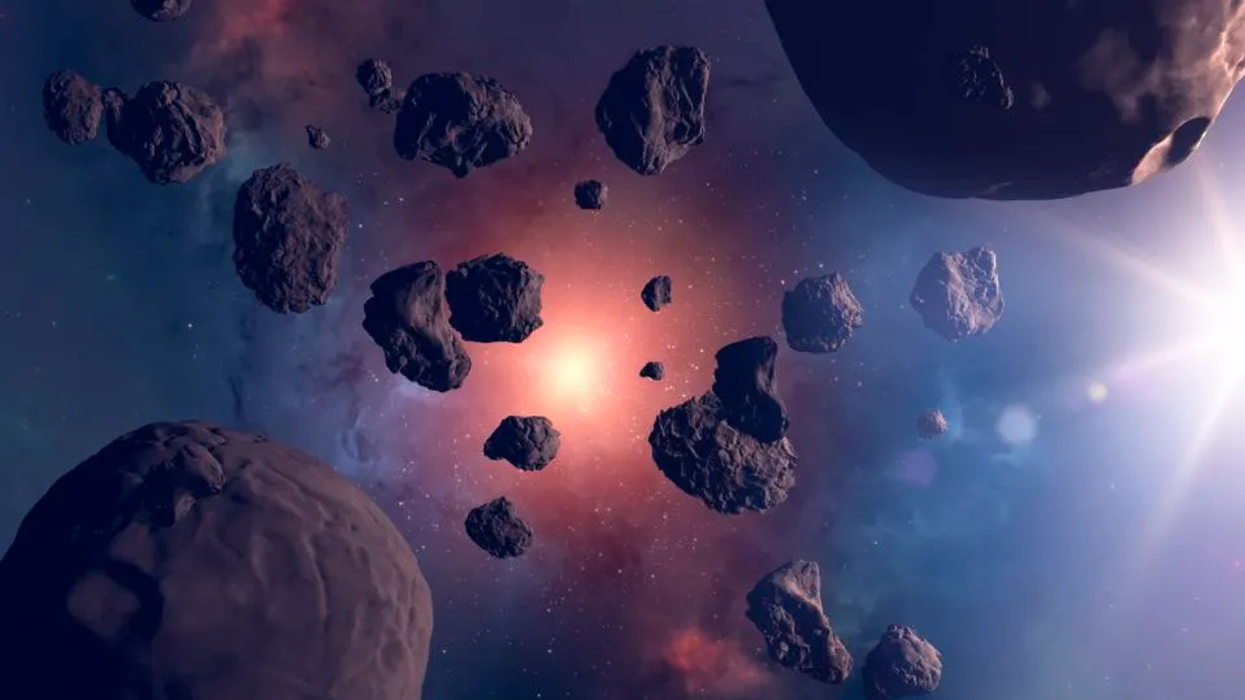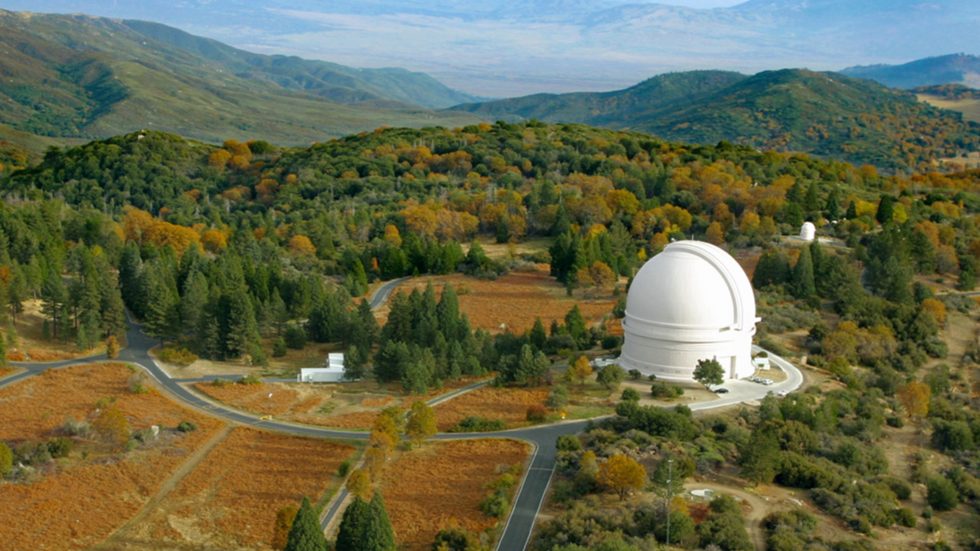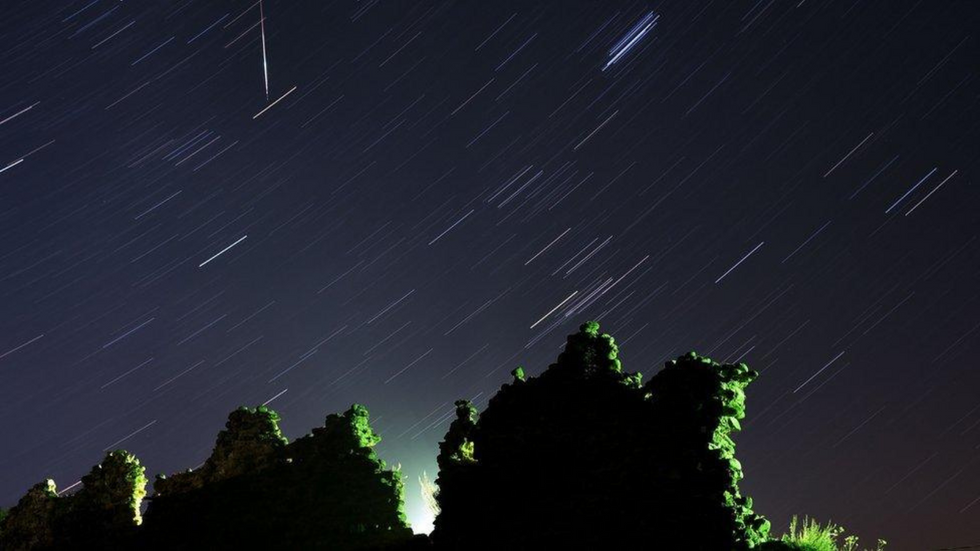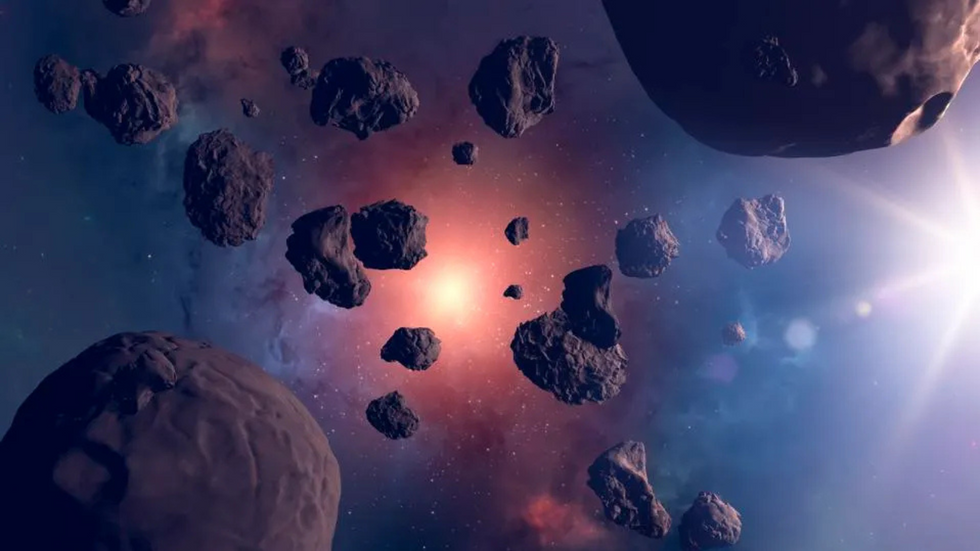Asteroids hiding in 'Doomsday swarm' heading towards Earth, confirm scientists

The swarm is believed to contain the remnants of a large asteroid or comet which broke apart 20-30,000 years ago | GETTY

Scientists have unearthed a number of potentially dangerous 'kilometre-class' space rocks lurking within the swarm
Don't Miss
Most Read
Scientists have confirmed the existence of a "Doomsday swarm" of asteroids heading towards Earth.
A team led by the University of Maryland has been investigating the Taurid swarm, a stream of space debris known to drift near our planet.
Their findings, presented at a recent American Astronomical Society meeting, have unearthed a number of potentially dangerous "kilometre-class" space rocks lurking within the swarm - but have revealed said number is lower than astronomers had expected.
Quanzhi Ye, an assistant research scientist at the University of Maryland who supervised the project, said: "Fortunately, we found that it's likely there may only be a handful of asteroids - perhaps only nine to 14 of them - that fit this large size class in the swarm."

The researchers were based at the Zwicky Transient Facility telescope at the Palomar Observatory in California
|CALIFORNIA INSTITUTE OF TECHNOLOGY
While the team's findings offer some reassurance, researchers have said their results still mean Earth needs improved detection capabilities in planetary defence efforts.
The researchers were based at the Zwicky Transient Facility telescope at the Palomar Observatory in California as they scoured the swarm.
Ye explained: "We took advantage of a rare opportunity when this swarm of asteroids passed closer to Earth, allowing us to more efficiently search for objects that could threaten our planet.
"Our findings suggest that the risk of being hit by a large asteroid in the Taurid swarm is much lower than we believed, which is great news," Ye added.
MORE SPACE NEWS:

The swarm is best known for producing two annual meteor showers, with the Northern Taurids shown here
|GETTY
The Taurid swarm is a vast stream of material in the solar system which Earth passes through every year.
It's believed to contain the remnants of a large asteroid or comet which broke apart 20-30,000 years ago.
Ye said: "Judging from our findings, the parent object that originally created the swarm was probably closer to 10 kilometres in diameter rather than a massive 100-kilometre object."

The swarm is believed to contain the remnants of a large asteroid or comet which broke apart 20-30,000 years ago
|GETTY
The swarm is best known for producing two annual meteor showers - the Southern and Northern Taurids, peaking in early November.
These "shooting stars", harmless to us down below, are often visible in late October, earning the nickname "Halloween fireballs".
While the new findings offer Earth some relief, scientists are still stressing the need to keep up their asteroid monitoring efforts.
Ye concluded: "While we still need to be vigilant about asteroid impacts, we can probably sleep better knowing these results."










